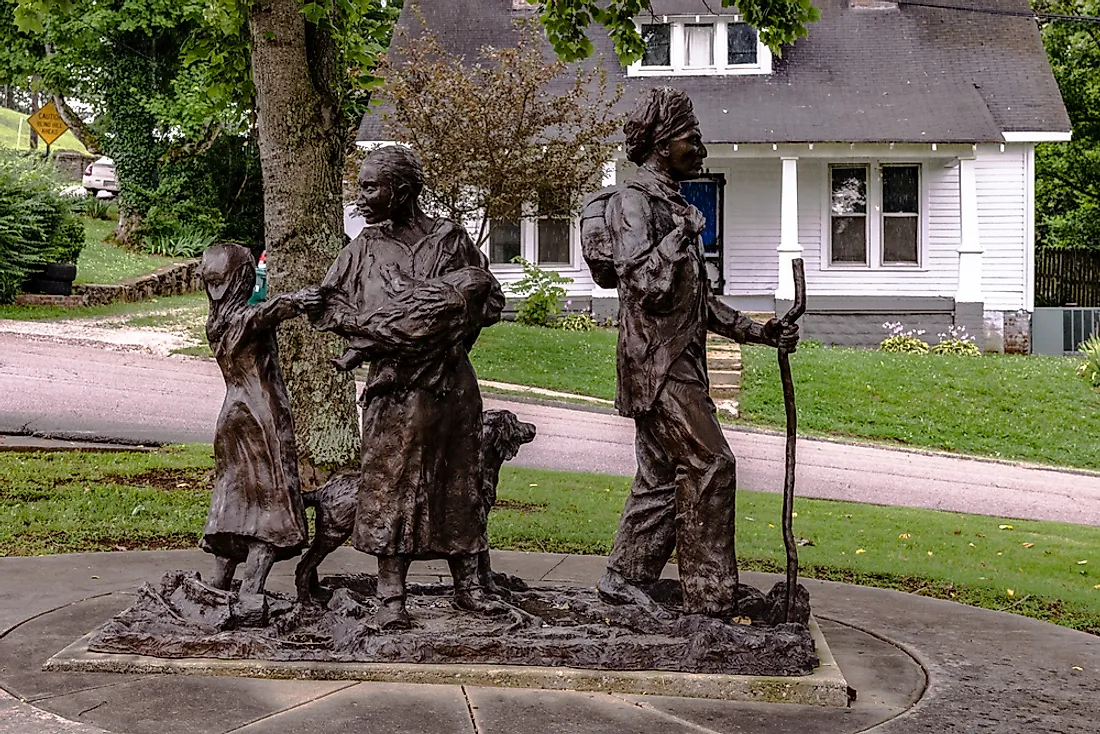What Was the Treaty of New Echota?

- In 1835 the Treaty of New Echota was signed by a small portion of the Cherokee.
- The treaty ceded all Cherokee land to the United States east of the Mississippi River for $5 million.
- The treaty was not approved by the Cherokee National Council nor signed by Principal Chief John Ross, it was amended 1836.
The Treaty of New Echota was agreed to on December 29, 1835. It ceded Cherokee land to the United States and agreed on the removal west of the Mississippi in exchange for $5 million in compensation. However, this treaty had been negotiated without the authorization from Cherokee Chief John Ross (1790-1866). Instead, it was spearheaded by Major Ridge (1771-1839), who claimed to represent the entire Cherokee Nation. In reality, he spoke only for a small fraction of the nation.
Lead-Up to the Treaty of New Echota
In 1829, the Georgia Gold Rush started in what is now present-day Lumpkin County, Georgia. The following year, gold was found in Carroll County, but a lot of the land that it was discovered on was under the control of the Cherokee Nation. Regardless of this, mining operations soon popped up, which led to increased tensions between the settlers, the Cherokee, Georgia, and other states.
This led to President Andrew Jackson (1767-1845) signing the Indian Removal Act into law in 1830, which authorized the President to grant unsettled lands west of the Mississippi in exchange for Indian lands within existing state borders. The Cherokee Nation took its case to the federal court system, which culminated in the 1831 Supreme Court case Cherokee Nation v. Georgia.
Despite the Supreme Court ruling in their favor the following year, in Worcester v. Georgia, the court reversed this decision to recognize the Cherokee as a sovereign nation. This led to the removal of the remaining Cherokee from the North Georgia goldfields.
Aftermath: The Trail of Tears
On March 1, 1836, the treaty was signed, and it was ratified by one vote in the U.S. Senate that May and signed by President Jackson. The Treaty provided a two-year grace period for Cherokee to willingly emigrate to the Indian Territory but the Cherokee Nation rejected the treaty. In 1838, this lead to the forced removal of the Cherokee as about 16,000 remained on their land. Only around 2,000 had migrated during the grace period.
The end of the grace period saw the US government send in 7,000 troops who forced the Cherokees off of their land by force. They were not allowed time to gather their belongings as they left and then began the long march starting from Red Clay, Tennessee to what is now present-day Oklahoma. During the 1,000-mile (1,600 km) journey in the winter of 1838, most Cherokee had little clothing and had to walk mostly on foot without shoes. In the end, around 4,000 Cherokee people died of cold, hunger, and disease.
This event would be referred to as the Trail of Tears by the Cherokee but its definition would be expanded overtime to cover the forced removal of Indians from Florida, Georgia, Alabama, North Carolina, and Tennessee from the start of the 1830s until the beginning of the 1850s.
In retaliation for signing the Treaty of New Echota Major Ridge, his son John Ridge (1802-39) and his nephew Elias Boudinot (1802-39) were assassinated by other Cherokees on June 22, 1839. Boudinot's brother Stand Watie (1806-71) was also attacked but survived.











